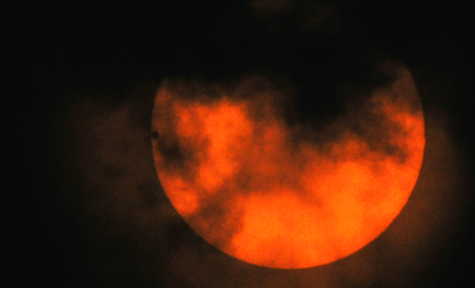One evening last August (0. 12. 19. 12. 10. 10.) I was filling my car with gasoline. Venus hung low and bright above the horizon in the deep blue twilight. In the foreground stood the glowing red and yellow symbol of Shell Oil. Swirling coils of aromatic hydrocarbons dissipated in the cool marine air.
The ancient Maya were obsessed with Venus. At the times when it was visible, they covered windows and doorways to protect against its rays of mirrored sunlight.

Venus’ brilliance in our skies arises partly because of its proximity, and partly because it is completely covered with thick white clouds that drift through the upper layers of a CO2 atmosphere roughly 100 times more massive than Earth’s. Venus, however, may not always have been so inhospitable. The high Deuterium to Hydrogen ratio in its atmosphere indicates that it has lost a lot of water. It is possible that during the first billion years of the Solar System’s history, Venus had liquid water, perhaps even an ocean, on its surface. If this was the case, then Venus shone down with less brilliant menace in the Archean skies.
In two, or perhaps three billion years from now, the Earth will have shared Venus’ fate, and will glow with pure-white intensity in the salmon twilight of the Martian evenings.
(Note: the above image of Venus in transit is a screenshot detail from a .jpg image on the website of the Venezuelan Centro de Investigaciones de Astronomia.)
